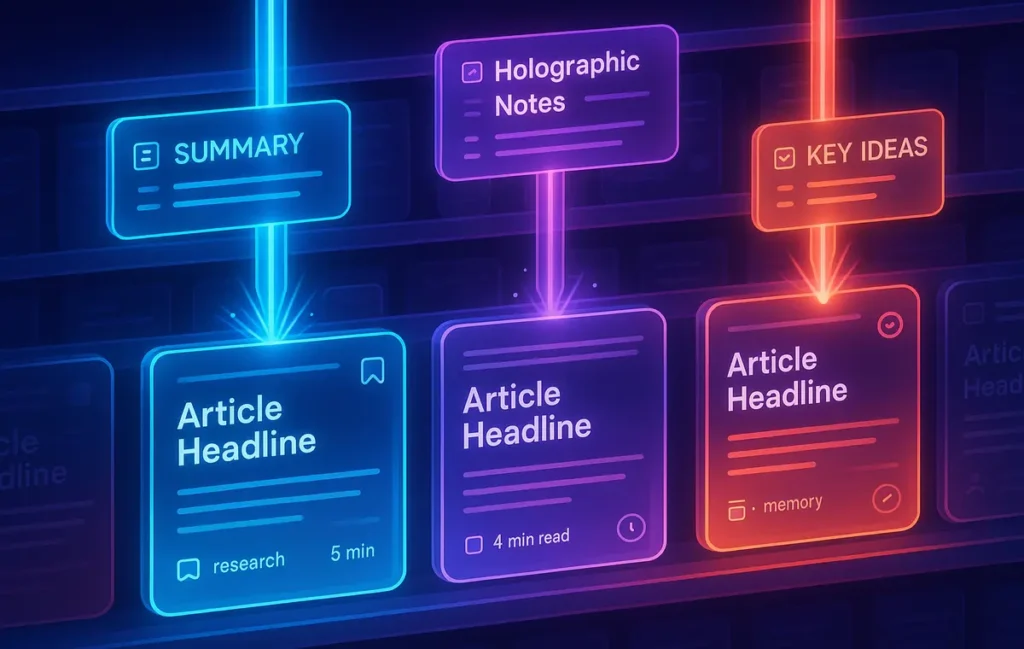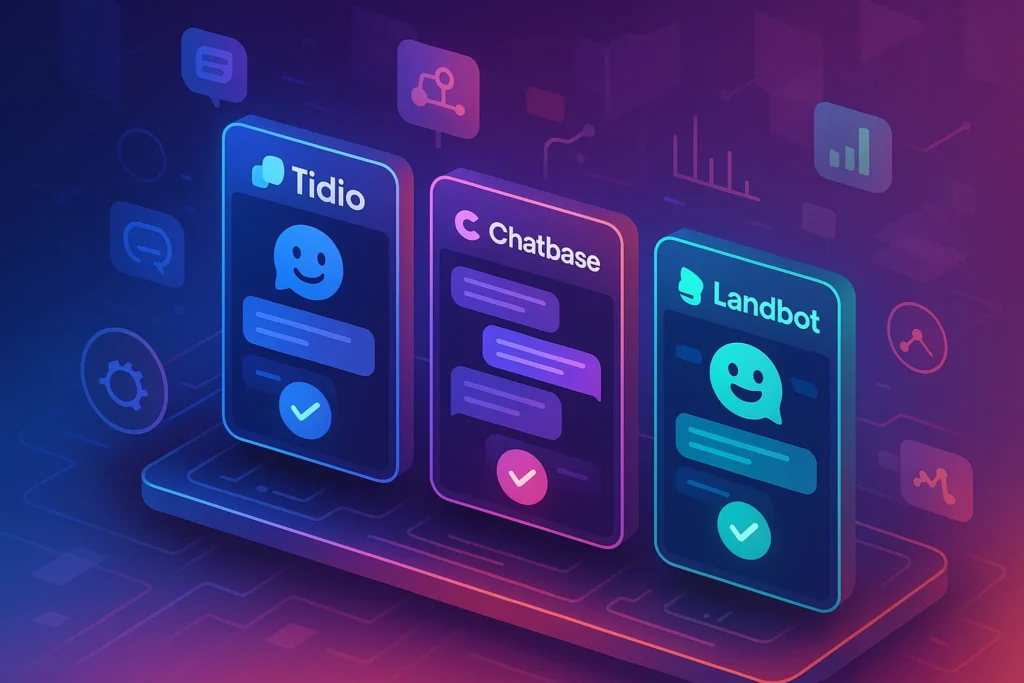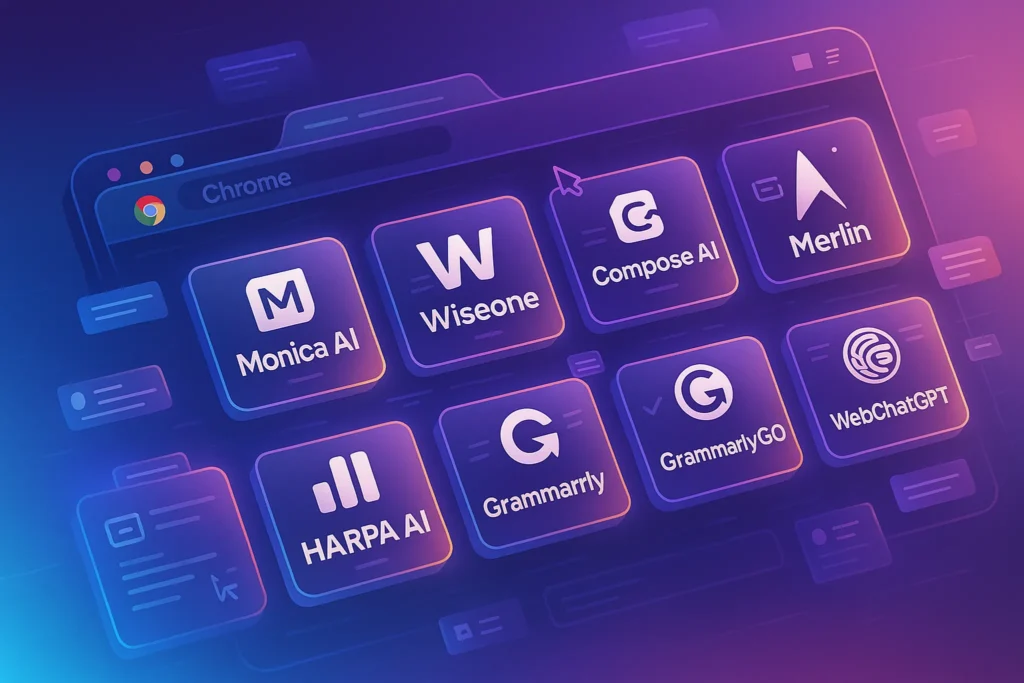🎯 Introduction: From “I’ll Read Later” to Actually Reading
We’ve all done it: you stumble on an article, hit “save for later,” and then… never return. Weeks pile up, bookmarks grow dusty, and your so-called reading list becomes a digital graveyard.
But in 2025, the world of read-it-later apps has changed. They’re no longer just buckets of forgotten links. They are becoming AI-powered knowledge tools that let you save, summarize, and recall content across platforms. Unlike traditional note-taking apps or second brain systems, these are designed specifically for consumption and recall, not writing or organizing everything in your life.
💡 Nerd Tip: Don’t confuse these apps with productivity giants like Notion vs. Evernote. Read-it-later apps are specialized for intake. Think of them as the “front door” to your knowledge system.
🔍 What Are Read-It-Later Apps?
At their core, read-it-later apps let you capture content—whether that’s a long essay, a Twitter thread, or a newsletter—and come back to it when you actually have time. The difference between 2015 and 2025 is striking.
In the past, apps like Pocket or Instapaper were essentially digital filing cabinets. You saved, maybe highlighted, maybe read offline. But now, these apps integrate AI summarization, search, tagging, and cross-platform sync. That means you don’t just save an article—you extract insights, build knowledge graphs, and surface ideas when you need them.
This matters more than ever because of content overload. The average knowledge worker today consumes more than 74 gigabytes of information per day, according to a 2024 IDC report. Without filtering, summarizing, and recall, most of that content is wasted.
That’s why apps like Matter, Omnivore, and Readwise Reader are redefining the category. Instead of being passive storage, they’ve become active assistants in your learning workflow.
💡 Nerd Tip: If you’re building your second brain, treat read-it-later apps as the capture layer—before material flows into tools like 7 Best Note-Taking Apps.
🛠️ The Contenders of 2025
Pocket is the veteran. Owned by Mozilla, it remains the most mainstream, with a massive user base. Its strength lies in its simplicity—easy saving from any browser or mobile app, and strong offline reading. Pocket Premium adds tagging and a permanent library.
But its AI capabilities lag behind. Summaries exist but feel basic compared to newer entrants. Where Pocket shines is still in mass capture and casual reading, especially for those who want a no-frills way to read saved articles on a flight or commute.
📌 Instapaper
Instapaper has always been the minimalist’s choice. Clean typography, distraction-free reading, and reliable highlighting tools make it great for deep reading sessions.
Its AI integrations in 2025 are modest—auto-summaries are functional but not as advanced as Matter’s contextual breakdowns. Still, for readers who want to focus on the text without distraction, Instapaper is unmatched.
📌 Matter
Matter represents the new generation. It’s not just for articles—you can save newsletters, Twitter threads, PDFs, even podcasts with transcriptions. The real differentiator is AI summaries and highlights, which can distill long reads into digestible insights.
One user on X put it bluntly: “Matter saved me hours. I don’t just read—I get the 3 key insights instantly.”
Matter also integrates directly with Notion, letting you sync highlights to your note-taking system. For knowledge workers, this makes it more than a reading tool—it’s part of a knowledge-building workflow.
📌 Omnivore
Omnivore is the open-source champion. It’s fast, free, and built with integrations in mind. Developers love it for its transparency, while power users enjoy its API hooks and Obsidian sync.
Its AI summaries are improving rapidly thanks to community contributions. While it lacks the polish of Matter, it’s the app you pick if you want full control, data privacy, and hackability.
📌 Reader by Readwise
Readwise built its reputation on resurfacing highlights. With Reader, it created a powerhouse: an all-in-one reading app that combines capture, highlighting, and spaced repetition recall.
What sets Reader apart is knowledge reinforcement. You don’t just save and forget—you actually see your highlights resurface daily. Combined with AI-powered summaries, it blurs the line between reading and active learning.
💡 Nerd Tip: If you’re already a second brain enthusiast, Reader is like having a personal trainer for your memory.
📊 Features Compared: The 2025 Showdown
When comparing these apps, four key dimensions matter:
Capture and Saving. Pocket and Matter make saving from mobile seamless. Omnivore’s integrations win with power users. Reader excels at importing from RSS and newsletters.
AI Summaries. Matter leads with contextual breakdowns. Reader’s summaries are also strong, especially tied to highlights. Instapaper and Pocket lag here, with more basic implementations.
Recall and Search. Reader dominates with resurfacing highlights, while Omnivore’s advanced filters and Matter’s semantic search are powerful. Pocket’s recall features feel dated.
Offline Reading. Pocket and Instapaper remain kings of distraction-free, offline reading. Matter is catching up but still internet-dependent for summaries.
Integrations. Omnivore wins on open-source sync, Matter integrates well with Notion, and Reader ties directly into the Readwise ecosystem.
💡 Nerd Tip: The best app isn’t “the one with the most features.” It’s the one that matches your reading habit.
🚀 Implementation Guide: Building Your Reading Flow
To make the most of these apps, think in terms of a system, not just a tool.
Step 1: Choose your main capture tool. Pocket for casual readers, Matter for AI-driven summaries, Reader for highlight reinforcement, or Omnivore if you want open-source flexibility.
Step 2: Connect it to your productivity stack. Sync highlights into Notion, Obsidian, or your preferred second brain. If you’re curious about setup, our Ultimate Guide to Building a Second Brain explains the architecture.
Step 3: Create a weekly review ritual. Don’t let your saved items rot. Set a reminder—Friday afternoon or Sunday morning works for many—and clear your queue. Delete, archive, or summarize.
Step 4: Use summaries to extract insights. Don’t just read—highlight key ideas, then resurface them later. Tools like Reader make this automatic.
💡 Nerd Tip: A “weekly purge” is healthier than a giant unread list. Better five articles truly read and recalled than fifty never touched.
⚠️ Challenges & Solutions
Even with smarter apps, the same challenges persist.
The biggest is oversaving. You’ll still be tempted to save everything, which only shifts the problem forward. The solution is ruthless curation—delete anything that doesn’t truly matter during your weekly review.
Another challenge is integration gaps. Not every app plays perfectly with Notion or Obsidian. Omnivore’s open approach helps, but if you rely heavily on integrations, test before committing.
Finally, AI summaries in free plans can be limited or inconsistent. Hallucinations are rare but possible—always double-check critical information.
💡 Nerd Tip: Think of AI summaries as “entry points,” not final answers. Let them guide your reading, not replace it.
⚡ Upgrade Your Reading Flow
Don’t just save articles—transform how you consume knowledge. Try Pocket Premium for distraction-free reading or Readwise Reader for active recall.
🕰️ Historical Context: From Pocket 1.0 to AI Companions
Read-it-later apps have been around for nearly two decades. The original “Read It Later,” launched in 2007, eventually evolved into Pocket, which made it easy to save articles from browsers with a single click. Instapaper, released around the same time, pioneered the concept of distraction-free reading.
For years, these apps were simple archives. You’d dump links into them and occasionally read on a flight or train. But as the internet exploded with newsletters, blogs, and social feeds, the problem shifted from saving content to making sense of content overload.
By the early 2020s, Pocket and Instapaper were joined by new players like Matter, Omnivore, and Readwise Reader. These tools went beyond storage: they introduced AI-powered summaries, integrations with note-taking apps, and resurfacing of highlights.
💡 Nerd Tip: History shows a pattern—every five to seven years, read-it-later tools reinvent themselves to keep up with how people consume media.
❌ Failure & Behavioral Traps: The “Save Overload” Problem
Even the smartest apps can’t save you from human behavior. The biggest failure case for read-it-later apps isn’t technical—it’s psychological.
Reddit threads are filled with confessions like: “I had 10,000 unread articles in Pocket before I admitted I’d never catch up.” Another user tweeted: “My read-it-later app is more like a graveyard. Nothing ever gets resurrected.”
This phenomenon, sometimes called “save overload”, happens because saving feels productive, even when reading never happens. AI summaries help, but they don’t solve the root problem: lack of disciplined review.
💡 Nerd Tip: Treat saving like triage. If you wouldn’t realistically read it in the next 7 days, don’t save it.
📊 Mini Comparison Table: Read-It-Later Apps in 2025
| Feature | Instapaper | Matter | Omnivore | Readwise Reader | |
|---|---|---|---|---|---|
| Offline Reading | Strong | Strong | Medium | Medium | Medium |
| AI Summaries | Basic | Basic | Advanced | Improving | Strong |
| Integrations | Limited | Limited | Notion | Obsidian/API | Readwise ecosystem |
| Recall & Search | Weak | Medium | Strong | Advanced | Excellent |
| Price | Free + Pro | Free + Pro | Free | Free | Subscription |
💡 Nerd Tip: Tables are useful—but let your reading style decide, not just features.
🏭 Industry-Specific Use Cases
These apps shine differently depending on the industry:
Students benefit from AI summaries and highlights, making Matter and Reader ideal for exam prep.
Researchers use Omnivore’s open-source sync to pipe academic papers into Obsidian knowledge bases.
Marketers save competitor newsletters and X threads into Reader, then resurface highlights for campaign planning.
Founders rely on summaries to skim trend reports quickly, filtering only what matters to their strategy.
💡 Nerd Tip: Always connect your read-it-later app to a downstream note-taking tool. Saved content without context is wasted content.
📈 Benchmarks and Numbers
-
Pocket’s average user saves 50+ articles per month but reads less than 30%.
-
Matter reports that AI summaries can cut reading time by 40–60%, depending on content length.
-
Readwise Reader users show 25% higher retention of highlights compared to non-resurfacing apps.
-
Omnivore adoption doubled in 2024 among academic researchers due to its free, open-source model.
These numbers highlight that the category isn’t just evolving—it’s producing measurable gains in productivity.
🔮 Future Outlook: Beyond “Read Later”
What’s next? We’re moving toward knowledge companions. Future apps will not only summarize what you saved, but also suggest what you should save, build personalized learning plans, and even quiz you on what you’ve read.
This raises ethical questions. If an AI starts recommending what to read—and what not to read—is it enhancing your knowledge or narrowing your worldview? The balance between curation and manipulation will define the next decade of read-it-later tools.
💡 Nerd Tip: Don’t let AI fully dictate your reading diet. Curiosity is still your best filter.
📬 Want More Smart AI Tips Like This?
Join our free newsletter and get weekly insights on AI tools, no-code apps, and future tech—delivered straight to your inbox. No fluff. Just high-quality content for creators, founders, and future builders.
🔐 100% privacy. No noise. Just value-packed content tips from NerdChips.
🧠 Nerd Verdict
In 2025, read-it-later apps are no longer digital junk drawers. They’ve evolved into knowledge gateways. Pocket and Instapaper keep things simple for readers, while Matter, Omnivore, and Reader offer AI-driven summaries, integrations, and recall features that make reading part of a true productivity workflow.
At NerdChips, our view is clear: these apps aren’t just for saving—they’re for learning, recalling, and building a smarter second brain.
❓ FAQ: Nerds Ask, We Answer
💬 Would You Bite?
Would you trust an AI-powered app to manage not just what you save, but what you recall?
Or do you still prefer the old-school method of bookmarks and manual lists? 👇
Crafted by NerdChips for readers who want to turn saved articles into lasting knowledge.



